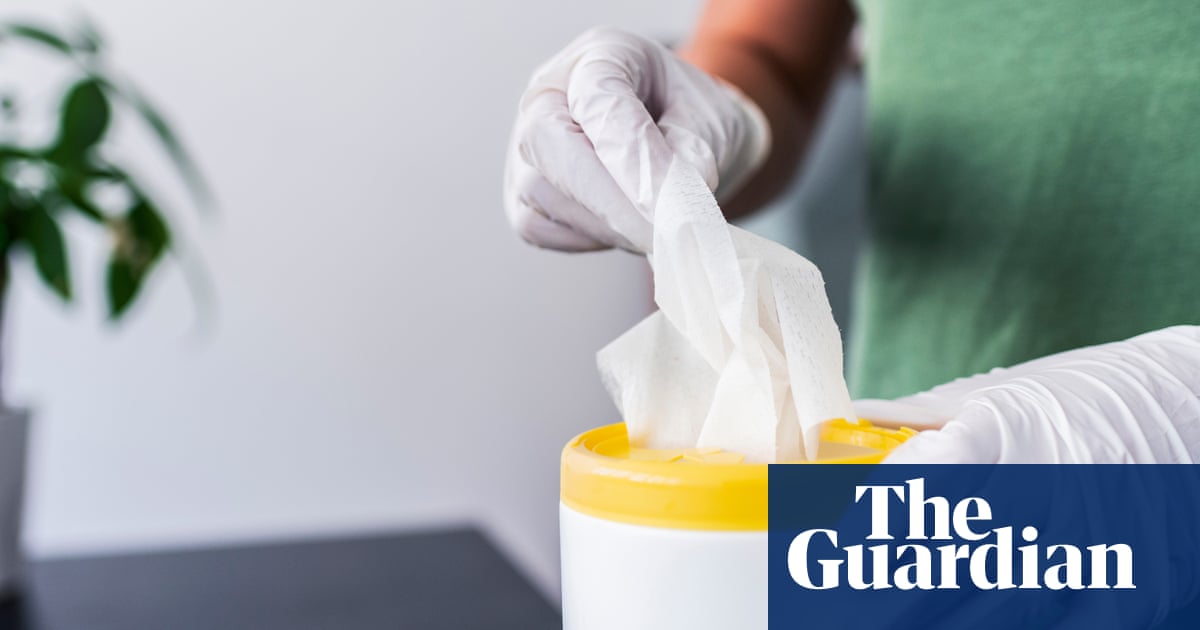- cross-posted to:
- [email protected]
- cross-posted to:
- [email protected]
Starch-based bioplastic that is said to be biodegradable and sustainable is potentially as toxic as petroleum-based plastic, and can cause similar health problems, new peer-reviewed research finds.
Bioplastics have been heralded as the future of plastic because it breaks down quicker than petroleum-based plastic, and is often made from plant-based material such as corn starch, rice starch or sugar.
The material is often used in fast fashion clothing, wet wipes, straws, cutlery and a range of other products. The new research found damage to organs, changes to the metabolism, gut microbe imbalances that can lead to cardiovascular disease, and changes to glucose levels, among other health issues.
The authors say their study is the first to confirm “adverse effects of long-term exposure” in mice.
Ok so what do we want? Toxic plastics that last forever or toxic plastics that break down in the environment after 3-5 years?
Because that is the gambit here. We’re not going going to just get rid of plastics altogether.
Also, this article is setting off my BS meter by claiming plastics contain 16,000 toxic substances but not showing how much of that is realistically possible to get into your body. The dose makes the poison!
“This spider contains 1300 toxic substances—one of which will kill you if even a tiny droplet gets in your blood! And these spiders are out in the environment!”
I smell petroleum company money.
I think “no plastics” is actually what we want
Are there any good alternatives though?
wood/paper, glass, metal.
For some use-cases, sure. But so many products today are only affordable (or even possible) because of plastic.
How would you make an affordable computer, for example, without plastic?
Okay, no more cheap computer sorry. You don’t just get to destroy the planet to save a few bucks
Can’t you see? We don’t want to safe a few bucks. We want to be able to afford it without having to sacrifice our children’s school tuition saving for it.
There are many medically necessary items that can’t replaced by anything but some form of plastic.
Don’t forget hemp
And bamboo.
Was the study funded by Big Oil?
. . . Just. Curious.
AFAIK the claim was never that bioplastic are “healthy”, the claim is that it breaks down way faster. Preventing a buildup as we have seen with mikroplastic.
Sensationalist headline IMO.It doesn’t breakdown as fast as claimed, either. PLA needs high temperature composting to breakdown.
It’s not impossible to do, but nobody bothers. It’s one of the more sustainable options for 3d printing, so we should get on that.
I actually see it as weirdly counterproductive. When bioplastics degrade they release their carbon into the air as carbon dioxide. Whereas a properly landfilled piece of plastic takes its carbon permanently out of circulation, it’s literally sequestered.
Landfills get a bad rap. When they’re done right they’re a clean and reliable way to deal with waste. They’re just easy to get wrong if you don’t care, and they look so unphotogenic it’s easy to campaign against them. But one of my favourite parks is a former landfill done right, aside from the occasional monitoring well scattered around the place there’s no way to tell what it used to be.
It’s only releasing CO2 that was already there. We’re not digging the carbon out of the ground after it was sequestered millions of years ago. PLA is currently mostly from corn, though there are other crops that can work. There’s even a hemp-based path, though I don’t know how viable it is.
PLA is one of the most recyclable plastics. Grind it up and you can melt it back into 3d printer filament. The machines for this have been improving a lot. The bad news is that you have to make sure you only put PLA stuff into the grinder. This makes it hard to do at makerspaces where you can’t trust people to separate PLA prints from others. I am hoping that my own makerspace gets a machine, and then you can at least handle your own prints that way.
CO2 is CO2, it doesn’t matter where the carbon came from. If you’re sequestering plastics that were made from plants then you’re taking it out of the atmosphere for a net benefit.
It was never intended as a carbon sequestration method, and it would make a very poor one. Considering the energy input in creating it, as well, it’s likely CO2 positive over its lifespan. We would be better off not making it at all if that’s the main consideration.
“Never intended” doesn’t mean it doesn’t work as one.
The point I’m making here is that if we already have a chunk of plastic, why not bury it? Your own comment that I originally responded to was about how the composting process for these bioplastics is difficult to do and so people rarely do it. Landfills are comparatively quite easy and common, we already have that process well established. So if you’ve got a chunk of carbon-rich plastic right there in your hand and you’re trying to decide what to do with it, which makes more sense, turning it into CO2 to vent into the atmosphere, or sequestering it effectively forever? There are carbon sequestration projects that go to much greater lengths to bury carbon underground than this.
Landfills don’t necessarily sequester the CO2 for long. Often, they release the carbon as methane. Methane is a much worse greenhouse gas than CO2, and so landfills often pipe the methane to be burned. The amount of CO2 released for every unit of methane is a smaller greenhouse concern than the original methane, but none of this should be considered sequestration.
Don’t the still break down to microplastics since they are so resistant to being broken down?
IDK how fast they break down, they are supposed to break down faster. But apparently not as fast as to makers claim.
That’s always been a garbage claim, “in an industrial composter” where heat and moisture are super high. At very least moisture and UV light are needed, probably not going to happen in a landfill. But then nothing else in there is gonna decay either. If you dig up landfills from the 70s and 80s, you can still read the newspaper articles layered in with everything else. Imagine the wrappers for candy you threw away as a kid. They still exist.
The catch is those landfills do get quite warm under the pile so if they didn’t need UV light it might work.
The reason why paper keeps so well is it needs oxygen to break down and it has a butt load of methane covering it under the pile
Me looking at my shiny new 3D printer after all this stuff:

Yup, this is why my printer is in an enclosure and always vents to outside no matter the filament I’m using.
Even though I kinda like the sweet smell of melted PLA. :(
“Starch based” plastic is just a way to greenwash PLA.
Just because the C, H, and O originally came from starch, does not automatically make the chemically synthesized product safe.
The point of these plastics isn’t greenwashing, the point is to biodegrade. Petroleum plastics don’t break down in compost or a landfill.
It does mean no petroleum was used to make the plastic, which is one environmentally-friendly aspect.
That’s incorrect, making things from crops that use farms which could be wildlife habitat and use oil based fertilizers and pesticides isn’t necessarily better or emit less net co2. It may in some cases be better but just like corn based ethanol it can also increase food shortages and depending on where it’s grown be worse than just using oil.
oil from the ground is a limited resource, farmland is relatively plentiful (more importantly governments want enough to feed more than their own people domestically even if the people won’t ever want that much corn in their diet).
That’s also incorrect. Oil is effectively unlimited, in the sense that we will stop using it on a large scale within the next 2-3 decades and after that demand will be lower than supply, the same situation we have with coal now.
And farmland is not plentiful at all, even though most of the world is covered in farmland it is always in short supply. That’s why Brazil farmers cut down and burn rainforest for farmland to feed cattle, or cut down orangutan habitat to grow palm oil. There is a 1:1 relationship between farmland and habitat for animals.
It barely makes it that far.







